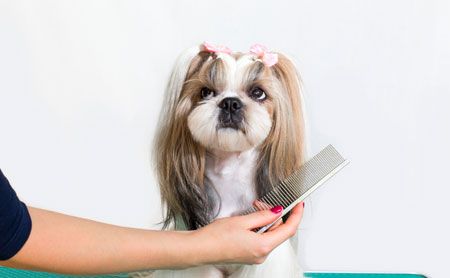When the groomer becomes the dentist
Your veterinary client opted for dental treatment at the groomers. Say what?

Your veterinary patient's face when their groomer suggests anesthesia-free dental treatment. (Photo: Shutterstock.com)“Thanks for calling Cares Veterinary Clinic. This is Amy. How can I help you today?”
“Hi Amy. This is Mrs. Weathers. I've been referred to you for Felix's dental health.”
“OK, great! Where does Felix normally receive dental care, and who referred you to us?”
“Felix usually gets his dental care at the groomer, but she said I should bring him in for a veterinary appointment.”
Record scratch.
Don't stare dumbfounded at the phone for too long. Mary Berg, BS, RVT, RLATG, VTS (dentistry), president of dental counseling service Beyond the Crown Veterinary Education in Lawrence, Kansas, says this scenario is happening more and more often. “For the most part, it's not what it sounds like,” she says. “Most groomers will do no more than a tooth brushing-that's not considered a dental treatment by any expanse of the imagination.”
What's worrisome, however, is when it is more than a complimentary tooth brushing. “My concerns stem from the fact that some groomers are doing anesthesia-free dentistry-as in tooth cleaning with more than a tooth brush,” Berg says. “This means there's no anesthesia, no training. The dog is awake the whole time. This can cause more damage and put the groomer and the pet at risk for injury.”
Don't say “dental disease”
When it comes to oral health, Mary Berg says you should ditch the term “dental disease” and use stronger words that convey the seriousness of the condition to pet owners. “I'm a big fan of using oral infection, because that's what it is. And using the word ‘infection' is something that clients can understand,” she says.
And aside from possible pain and injury that can occur when groomers wield dental tools, Berg says she's also concerned because groomers are not trained to perform dentistry. After all, good dental care is about more than pretty white teeth-it's about cleaning below the gum line. These are jobs best left to trained and licensed veterinarians and veterinary technicians, who are supervised by practicing veterinarians.
So what can and should groomers watch out for when it comes to pets' teeth? “The No. 1 thing to watch for is really bad breath,” Berg says. “That signals oral infection-the two go hand in hand. It's not just doggy breath, it's a decaying smell that means infection.”
Along with noting a dog's halitosis, Berg says that groomers can also point out issues that any pet owner could recognize. “If they do look at teeth, they could look for red swollen gums and tartar accumulation. While it might not necessarily signify disease, it does mean the pet could have gingivitis. A loose or fractured tooth could also be something easily noticeable.”
When it comes to referring to a veterinarian, Berg says that's better than the alternative: treating the teeth themselves. “Brushing teeth with an oral infection is going to cause more pain than just recommending a professional dental cleaning,” she says. “Maybe I'm a cynic, but I get concerned when they'd rather treat the pet themselves than refer.”
Bottom line? “When you're looking at a dog or cat, you should look at the oral cavity rather than the teeth. What's going on below? If you can't answer that, you shouldn't be responsible for the pet's dental treatment in the first place.”